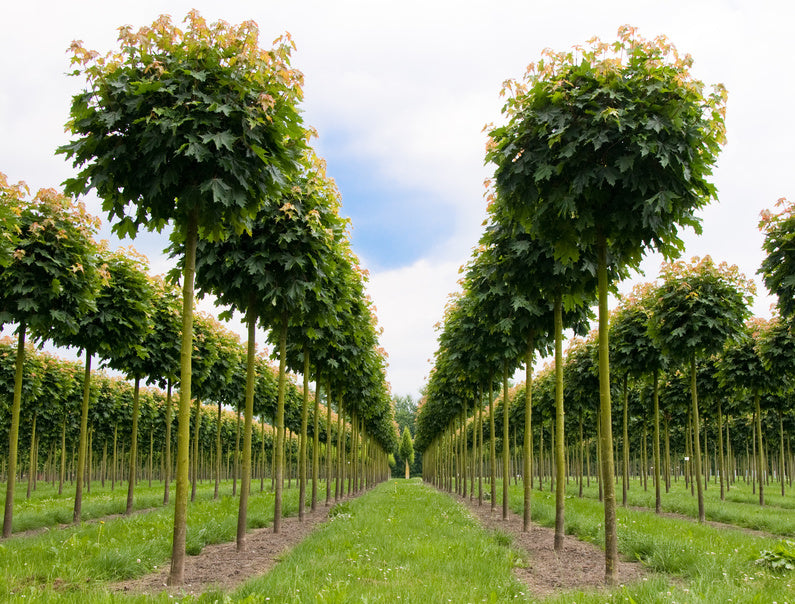Globe maple
The spherical maple (Acer platanoides 'Globosum') is small, extremely popular, and, in its autumn plumage, a shining example for all house trees. The spherical maple is not only used to enhance streets, pedestrian zones, and parks; this valuable small tree fits into any front yard, is often used in architecturally designed courtyards, and even finds a place in large containers on the patio. Its clear, geometric shape is a perfect fit!

Growth form:
The small tree forms a regular, spherical crown, which takes on a somewhat flattened, broadly rounded shape with age. Depending on the height of the graft, the spherical maple reaches a final height of 4-6 m and, over the years, develops a crown diameter of 3-4 m. The spherical shape is grafted onto the trunk of the native Norway maple.
Leaf and flower:
The fresh green leaves are typically 5- to 7-lobed and have long stalks. From mid-October, the foliage turns bright golden yellow to reddish. Depending on the weather, location, and climate, leaf emergence can vary by up to 14 days from tree to tree. In spring, before the leaves appear, i.e., in April/May, the beautiful, yellowish-green umbel flowers appear; they have a remarkable effect from a distance, even if the grafted, spherical flowers are not quite as abundant as those of the species. Every child is familiar with the fruits of the Norway maple; the paired, winged nuts stick well to the nose. The wings are obtusely angled to horizontally protruding.
Site requirements/care measures:
This "little one" is extremely undemanding and easy to care for. It is very frost-hardy, tolerates heat and drought, and is therefore perfectly suited to urban climates. The globe maple grows in sun and partial shade, tolerates all soil types from slightly acidic to alkaline; it only dislikes waterlogging and extremely acidic soils. Its beautiful, geometric, spherical crown retains its shape even without pruning.
Ecology/Special features:
Due to its dense crown, it is very popular with birds as a nesting and sheltering tree. The foliage and young branches contain a milky sap that oozes when damaged. Pollination is carried out by bees, bumblebees, and other insects.
TEXT: Martina Raabe












